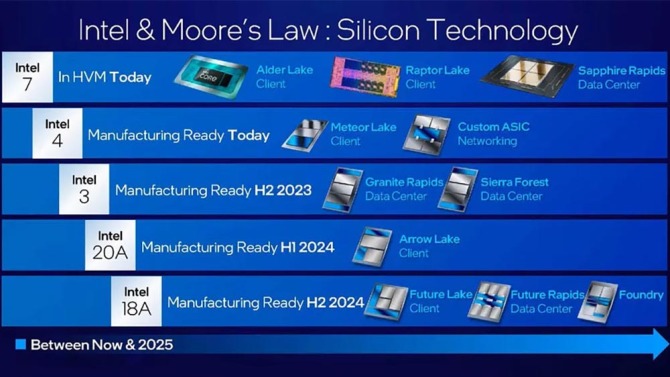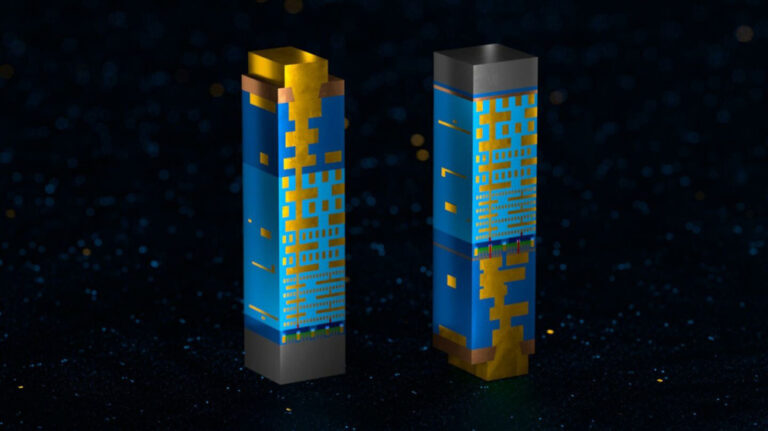The business predicts that it will take the lead in the semiconductor race back in 2024.
For years, Intel’s advancement on advanced nodes has lagged behind that of its primary rival, TSMC. In an attempt to close this gap, CEO Pat Gelsinger launched an aggressive comeback strategy upon his return to the company in 2021. The company’s IDM 2.0 plan calls for moving through five nodes in four years, which should allow it to surpass all of its rivals and once again reach the pinnacle of semiconductor manufacturing. It now looks as though the company is on track to fulfill this promise.
The company’s chief vice president of technology development, Sanjay Natarajan, stated in a paywalled article flagged by Wccftech that “we will enter mass production [of its 2nm process]in 2024, and Intel will lead miniaturization again.” This is a bold statement from the company, but it also indicates it is still sticking to its roadmap. In a recent interview, one of its vice presidents stated the company is set to begin production on its “2nm” node next year, which it calls Intel 20A. If it succeeds in this endeavor—always uncertain in the semiconductor business—it would put Intel years ahead of TSMC in the race to 2nm.

The company would theoretically lead the industry if it started producing 2nm chips in 2024, since TSMC would have only just started to gain traction with its most recent 3nm process the following year. Moreover, TSMC is not expected to start producing 2nm chips until 2025, though there have been rumors that it might be delayed until 2026 as well. Samsung is also in this race, and it has already stated that it expects to start producing 2nm chips in 2025, so Intel might also beat the Korean chipmaker to the punch. Samsung has stated that it is targeting TSMC in the 2nm race, indicating that it did not view Intel’s stated goals as a legitimate threat.
If Intel meets its goal and starts producing 20A next year, it will enable it to deliver its first desktop-class process on the 2nm node in the second half of 2024. This is anticipated to be Arrow Lake, the company’s first tile-based desktop chip, which will be manufactured using RibbonFET gate-all-around (GAA) transistors rather than FinFET, as was the case with its all-new Meteor Lake architecture, which was produced on Intel 4 (formerly 7nm). Additionally, Intel will start using backside power delivery (top of article), which it calls PowerVia, for Intel 20A.
The company has hit its roadmap target for Meteor Lake by delivering it this week after years of delays, so it seems like the company is back on track in moving from node to node. We shall soon see if it can keep this momentum up as it advances to ever-smaller nodes. We will soon find out what Intel has in store as it will theoretically have begun cranking out 20A chips in the next six months. If that occurs, it will put it at least one year ahead of TSMC in getting to 2nm first.

